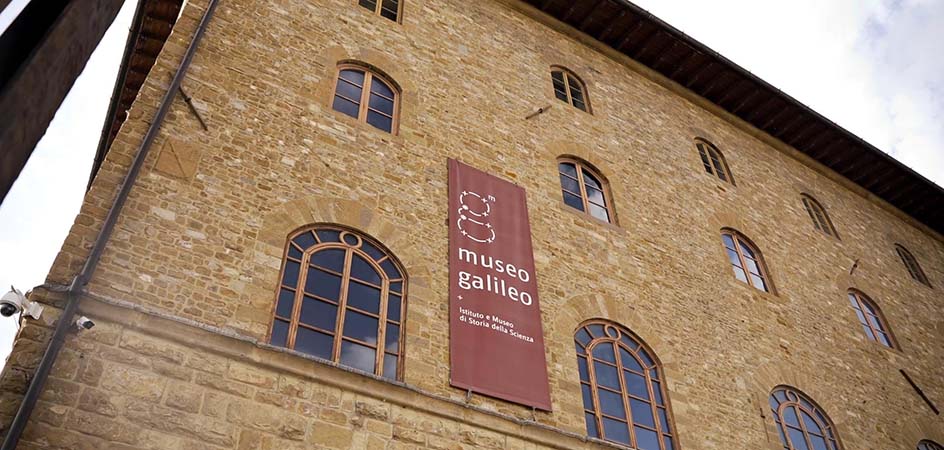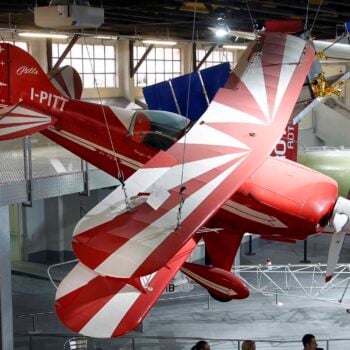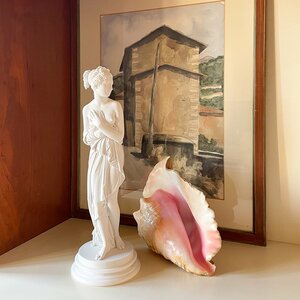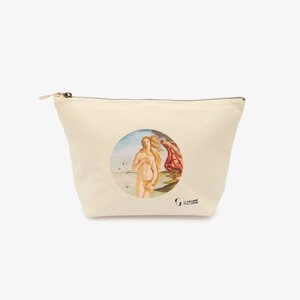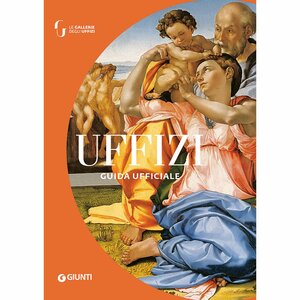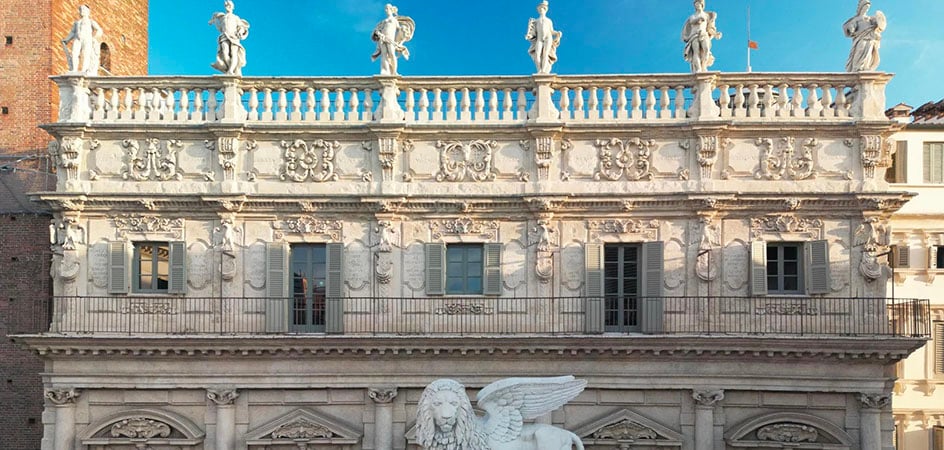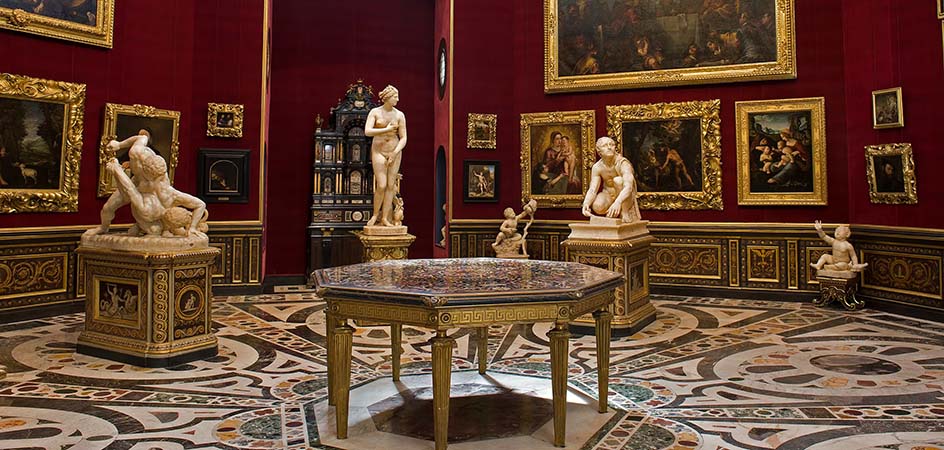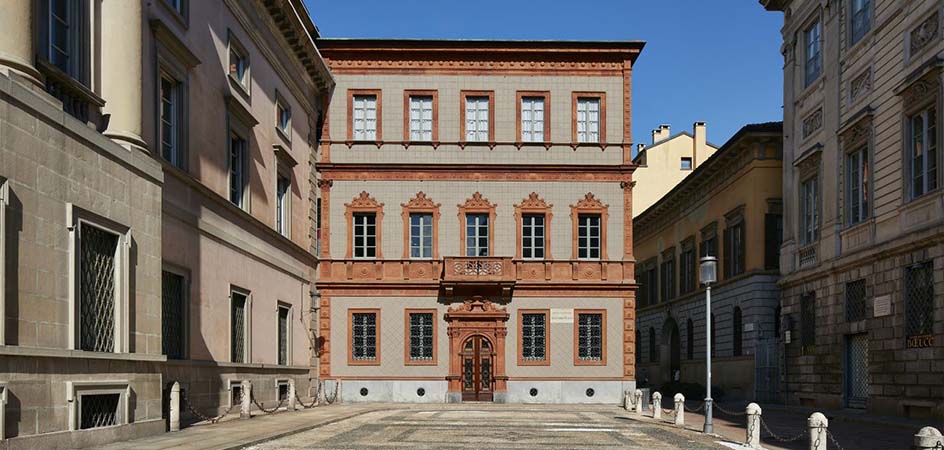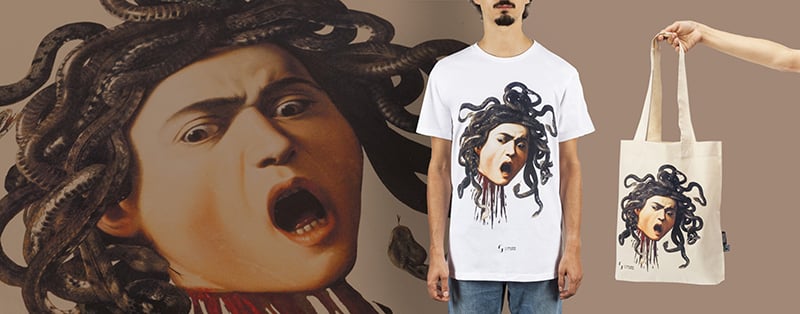Renamed Museo Galileo in 2010, the historic Institute of the History of Science of the University of Florence is dedicated to the material testimonies of Italian science and was the first of its kind in Italy. The collection – among the most important in the world – also includes instruments owned and devised by Galileo Galilei: the celebrated physicist and astronomer who, in the early seventeenth century, supported the Copernican heliocentric theory in opposition to the Church’s geocentric vision. Accused of heresy, Galilei was forced to recant, but his discoveries were later confirmed, and today, in the museum dedicated to him, we can admire some of the objects that contributed to modern science.
Galileo Galilei, man of science and culture
Galileo Galilei was born in Pisa in 1564 and a few years later his family moved to Florence. Here he studied at the Faculty of Arts but soon became passionate about geometry and mathematics, obtaining in 1592 the chair of mathematics at the University of Padua, where he taught for almost twenty years. It was a lively period, both scientifically and personally: all three of his children were born in the Veneto – his beloved Virginia (1600–1634), Livia (1601–1659) and Vincenzo (1606–1649). He created the geometric and military compass and, in 1610, published the Sidereus Nuncius (“Starry Messenger”), dedicating it to the Grand Duke of Tuscany, Cosimo II de’ Medici (1590–1621).
In this work, Galileo set out his astronomical observations – conducted through the telescope – in support of Copernican theory. According to Copernicus (1473–1543), the Sun occupies the central position and not the Earth: a theory we know to be true today, but which at the time openly contradicted the geocentric vision of the Catholic Church, threatening its very foundations (the centrality and immobility of the Earth being upheld by the Scriptures). The ecclesiastical authorities reacted swiftly: Copernicus’ writings were partially censored and Galileo was ordered not to defend the theory.
After a decade of relative quiet, however, the scientist once again asserted heliocentrism in his Dialogo sopra i due massimi sistemi del mondo (1632). Summoned to Rome before the Inquisition, Galileo underwent a harsh trial the following year and was forced to renounce his position.
Physicist, astronomer, but also philosopher and writer, Galileo died at his home in Arcetri, in the hills of Florence, in January 1642, leaving behind instruments, writings, scientific discoveries and a working method (the famous experimental method) essential to the development of modern research.
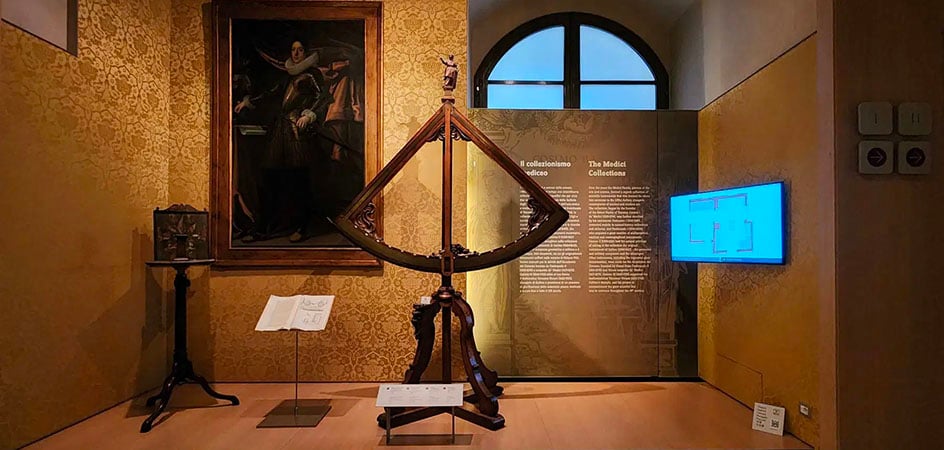
The Museo Galileo and its collections
The Museo Galileo occupies the entire Palazzo Castellani, an ancient building already known in Dante’s time. Opened to the public in 1930 as the Institute and Museum of the History of Science under the visionary direction of Andrea Corsini, today it preserves over a thousand instruments from the Medici and Lorraine collections.
This impressive collection confirms the two dynasties’ keen interest in promoting and supporting the sciences. Before reaching its present location, the collection had been set up and transferred by members of the two families to various symbolic sites: from the Guardaroba of Palazzo Vecchio to the “Stanzino delle Matematiche” of the Galleria degli Uffizi, then to Palazzo Pitti with the Accademia del Cimento, and later to the Royal Museum of Physics and Natural History at Palazzo Torrigiani (today Museo La Specola). It was here that in 1841 Grand Duke Leopold II (1797–1870) had the Tribuna Galileo built to house the scientist’s portrait and, above all, his famous instruments.
Galilean instruments and memorabilia to see
The visit unfolds through eighteen themed rooms displaying numerous devices and experimental apparatus from different perspectives: representations of the world, war, astronomy and time, maritime science, Galileo’s new worlds, and much more. In the three interactive rooms on the ground floor, visitors can explore Galilean discoveries and instruments both physically and virtually.
These can still be seen in the museum today, alongside the others: here are some of the rarest, most significant and curious objects in the entire exhibition.
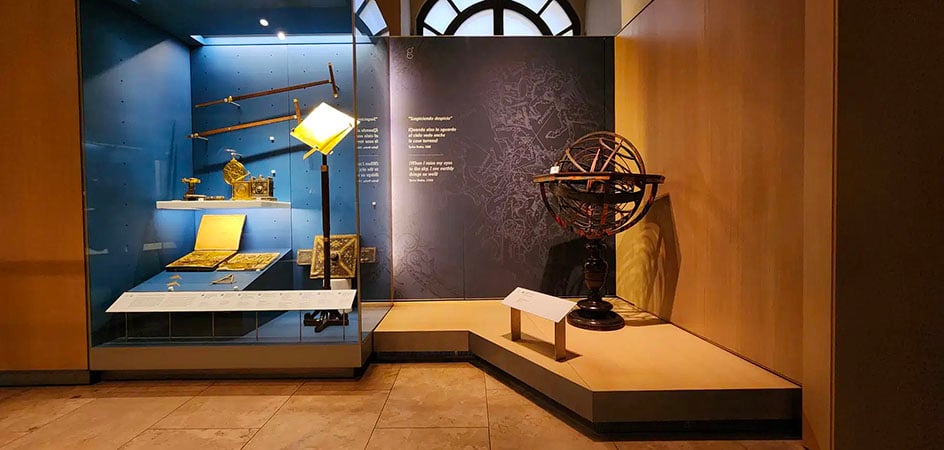
The geometric and military compass
In Room VII, the heart of the museum, is one of the compasses built by Galileo from 1597 onwards: probably the very one he gave to Grand Duke Cosimo II together with his Le operazioni del compasso geometrico et militare of 1606. Unlike the common compass, this device was not intended for drawing but for carrying out complex geometric and arithmetic operations. Made of brass, it consists of two graduated arms joined by a disc (the “nocella”), a semicircular quadrant and a movable cursor allowing it to be kept upright.
Beyond the object itself, it is interesting to know that the compass was at the centre of a dispute between its inventor and the Milanese scientist Baldassarre Capra, who claimed authorship of the invention and accused Galileo of plagiarism. Such an accusation was unacceptable to the Pisan, who responded with a forceful and categorical Difesa, demonstrating beyond doubt the truth of the matter.
The telescopes and the objective lens
Speaking of misattributed inventions, Galileo is often credited with inventing the telescope. In fact, this is not the case, as Dutch models were already circulating at the beginning of the seventeenth century. However, it is true that the Italian made numerous improvements to the instrument, significantly increasing its magnifying power and adding accessories that allowed not only observation but also measurement of astronomical phenomena. After presenting it to the Venetian Senate as a military device for spotting ships from afar, Galileo was the first to turn it towards the heavens to explore the night sky.
Because of its long-range capabilities, in 1611 Prince Federico Cesi, founder of the Accademia dei Lincei, proposed the name “telescopio” for Galileo’s instrument, from the Greek words tele (far) and scopeo (to see).
The museum preserves two of Galileo’s original telescopes, the only ones that have survived: one of wood, paper and copper, the other of wood and leather. Also on display is the objective lens of the telescope with which, between 1609 and 1610, Galileo discovered the satellites of Jupiter (which he named Medicea Sidera in dedication to the Tuscan rulers). Donated to Grand Duke Cosimo II, it was accidentally broken, as can still be seen today. The damage did not diminish its value, highlighted by the fine ebony frame dating from 1677, crafted by Vittorio Crosten on commission from the Medici.
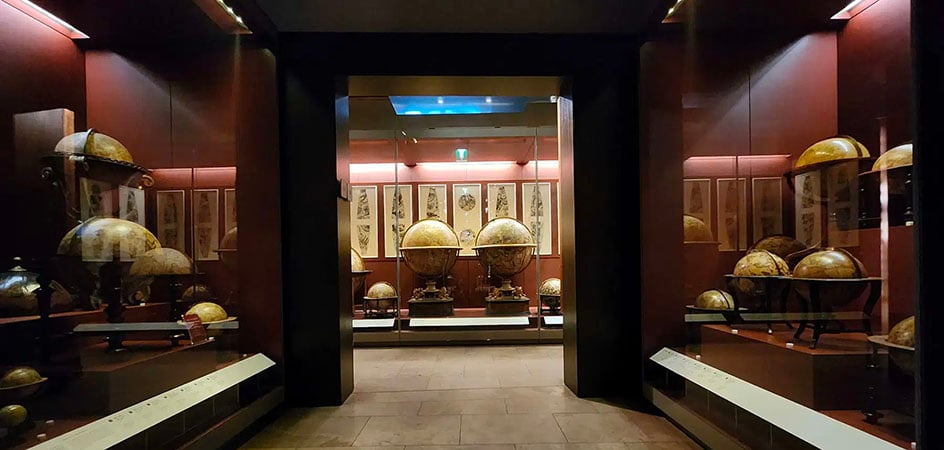
Iconography and relics: the bust and the middle finger
The compass and the telescope are the instruments that most contributed to Galileo’s renown, and they are the very objects with which he is portrayed in the marble bust that greets visitors in the seventh room. Commissioned by Cosimo III and created in 1674 by Carlo Marcellini, the sculpture depicts the bearded scientist with his face turned slightly to the right, clutching the two iconic objects. Among the many images present here, it attests to the prestige achieved by the Pisan, elevated to the status of hero and martyr of science.
Are you interested in articles like this?
Sign up for the newsletter to receive updates and insights from BeCulture!
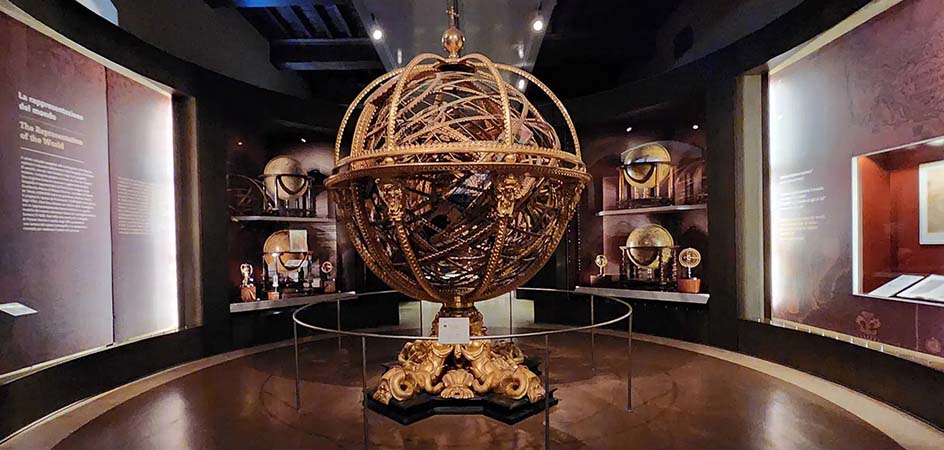
Another object that never fails to astonish visitors is displayed in a small glass cup with lid and gold decorations, supported by an engraved alabaster base: Galileo’s middle finger. It is one of three fingers, along with a tooth, taken from Galileo’s remains by Anton Francesco Gori in March 1737 during the transfer of his body from the original burial place to the monumental tomb in the Basilica di Santa Croce in Florence. The inscription on the base, written by Tommaso Perelli, praises the value of the finger: “[…] whereby the illustrious hand / Traced the immense heavens, / And pointed to new stars […]”.
Beyond his study of the universe, Galileo also carried out fundamental research into the natural motion of falling bodies and the magnetic field, as well as making significant contributions to the invention of the microscope and the modern thermometer. Material traces of these and other discoveries are preserved within the museum that bears his name, which we invite you to explore in its entirety.
Each room recounts not only a significant part of the history of science but also the worldview and society of past eras. Room XI, for example, houses the electrostatic machines used for the so-called “electrical evenings”: spectacular demonstrations of sparks and other natural phenomena designed to entertain and astonish eighteenth-century high society.
The Museo Galileo offers a fascinating journey through science, inventions and curiosities, capable of delighting and intriguing both adults and children.


